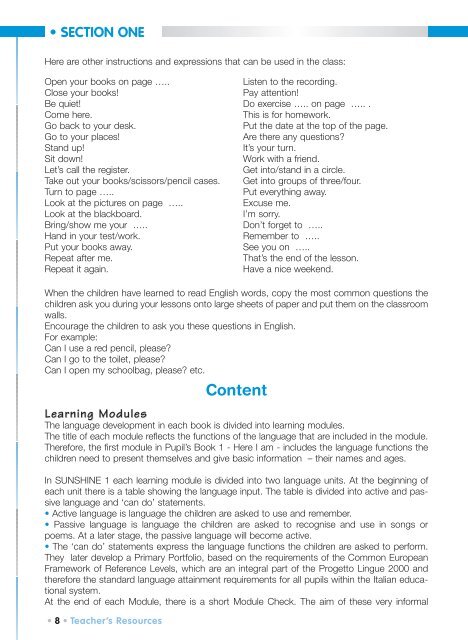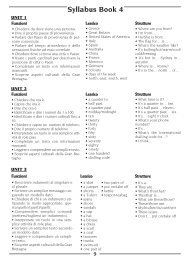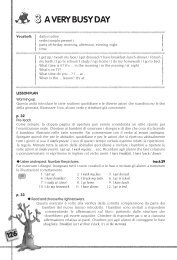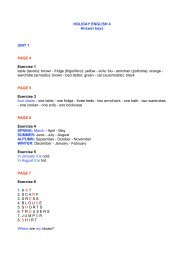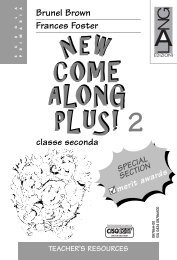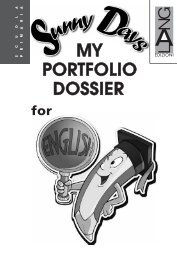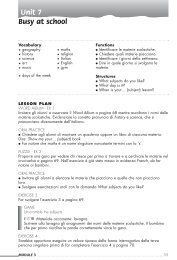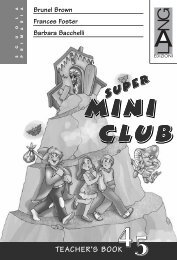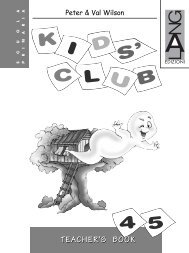TEACHER'S RESOURCES
TEACHER'S RESOURCES
TEACHER'S RESOURCES
You also want an ePaper? Increase the reach of your titles
YUMPU automatically turns print PDFs into web optimized ePapers that Google loves.
• SECTION ONEHere are other instructions and expressions that can be used in the class:Open your books on page …..Close your books!Be quiet!Come here.Go back to your desk.Go to your places!Stand up!Sit down!Let’s call the register.Take out your books/scissors/pencil cases.Turn to page …..Look at the pictures on page …..Look at the blackboard.Bring/show me your …..Hand in your test/work.Put your books away.Repeat after me.Repeat it again.Listen to the recording.Pay attention!Do exercise ….. on page ….. .This is for homework.Put the date at the top of the page.Are there any questions?It’s your turn.Work with a friend.Get into/stand in a circle.Get into groups of three/four.Put everything away.Excuse me.I’m sorry.Don’t forget to …..Remember to …..See you on …..That’s the end of the lesson.Have a nice weekend.When the children have learned to read English words, copy the most common questions thechildren ask you during your lessons onto large sheets of paper and put them on the classroomwalls.Encourage the children to ask you these questions in English.For example:Can I use a red pencil, please?Can I go to the toilet, please?Can I open my schoolbag, please? etc.Learning Modules M• 8 • Teacher’s ResourcesContentThe language development in each book is divided into learning modules.The title of each module reflects the functions of the language that are included in the module.Therefore, the first module in Pupil’s Book 1 - Here I am - includes the language functions thechildren need to present themselves and give basic information – their names and ages.In SUNSHINE 1 each learning module is divided into two language units. At the beginning ofeach unit there is a table showing the language input. The table is divided into active and passivelanguage and ‘can do’ statements.• Active language is language the children are asked to use and remember.• Passive language is language the children are asked to recognise and use in songs orpoems. At a later stage, the passive language will become active.• The ‘can do’ statements express the language functions the children are asked to perform.They later develop a Primary Portfolio, based on the requirements of the Common EuropeanFramework of Reference Levels, which are an integral part of the Progetto Lingue 2000 andtherefore the standard language attainment requirements for all pupils within the Italian educationalsystem.At the end of each Module, there is a short Module Check. The aim of these very informal


